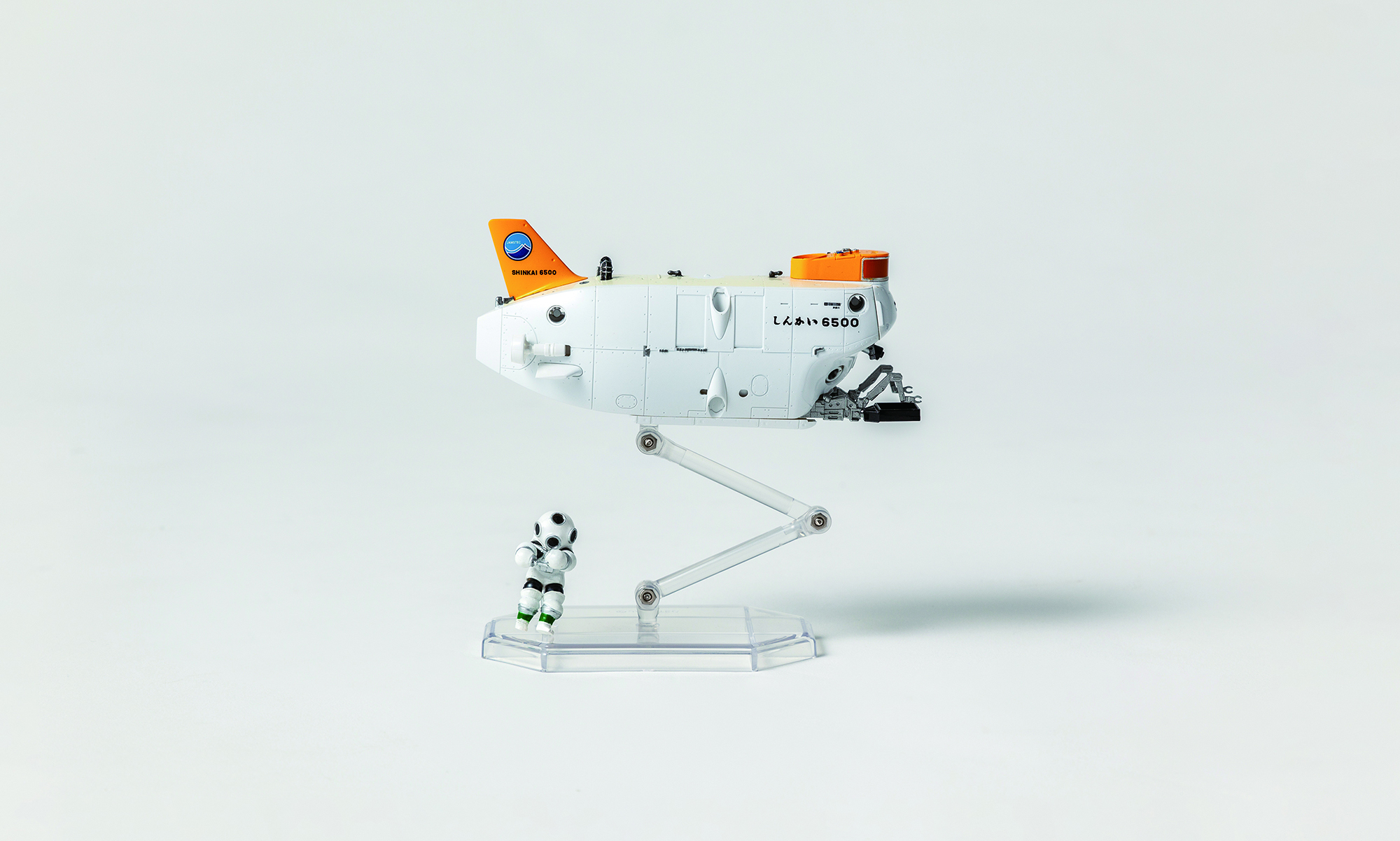しんかい6500 模型The Shinkai 6500 (Scale Model)
システム創成学専攻Department of Systems Innovation

「しんかい6500」とは、国立研究開発法人海洋研究開発機構 (JAMSTEC)が保有・運用する深度6,500mまで潜水可能な有人潜水調査船です。
太平洋・大西洋・インド洋など世界中の海で調査を行っており、本学の加藤泰浩教授らの研究グループが参加した南鳥島での調査では、通算1500回目の潜航を達成しました。直径2mのチタン合金製耐圧殻の中に操縦士を含め3名が乗船でき、機体前方の覗き窓から直接海底の様子を観察しながら、2本のマニピュレータを使って各種作業を行います。
「しんかい6500」によって南鳥島周辺海域で行われたマンガンノジュールとレアアース泥の調査では、「マンガンノジュールフィールド」の発見や新たなレアアース泥探査手法の開発など大きな成果が挙がっています。
しんかい6500 模型(深海のフロンティア資源の開発を目指して)
寸法:200×140×65
制作:株式会社海洋堂
所蔵:東京大学 大学院工学系研究科 システム創成学専攻
「しんかい6500」とは、国立研究開発法人海洋研究開発機構 (JAMSTEC) が保有、運用する有人潜水調査船。南鳥島周辺海域でもレアアース泥の新たな探査手法の開発や「マンガンノジュールフィールド」の調査などで成果をあげる。
The “Shinkai 6500” is a manned research submersible that can dive to a depth of 6,500m, which is owned and operated by the Japan Agency for Marine-Earth Science and Technology (JAMSTEC).
Diving surveys were conducted in the global oceans, including the Pacific, Atlantic and Indian Oceans, and the total number of dives reached 1500 in 2017 during a research cruise conducted by Professor Kato’s group within the Minami-Tori-Shima EEZ. Three crews (two pilots and a scientist) operate within a titanium pressure hull with an internal diameter of 2 m. Direct observation of sea-floor through three small windows and various operations using two manipulators can be performed using the “Shinkai 6500”.
Researches of manganese nodules and REY-rich mud by “Shinkai 6500” in the Japanese EEZ around the Minami-Tori-Shima Island achieved big results, such as the discovery of vast “manganese nodules fields” and developing new exploration methods of REY-rich mud.
Shinkai 6500 (Scale model) (Towards development of the frontier resources in deep-sea)
Size: 200×140×65
Production: KAIYODO Co.,Ltd.
Collection: Department of Systems Innovation, School of Engineering, The University of Tokyo
“Shinkai 6500” is a manned research submersible owned and operated by the Japan Agency for Marine-Earth Science and Technology (JAMSTEC). In the Japanese EEZ around the Minamitorishima Island, it was utilized for researches of deep-sea mineral resources, such as developing new exploration methods of REY-rich mud and searching “manganese nodules fields”.

